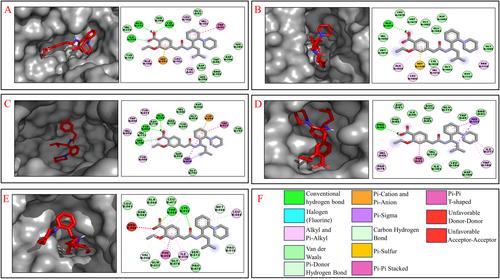Multireceptor Analysis for Evaluating the Antidiabetic Efficacy of Karanjin: A Computational Approach
Abstract
Background
Diabetes mellitus, notably type 2, is a rising global health challenge, prompting the need for effective management strategies. Common medications such as metformin, insulin, repaglinide and sitagliptin can induce side effects like gastrointestinal disturbances, hypoglycemia, weight gain and specific organ risks. Plant-derived therapies like Karanjin from Pongamia pinnata present promising alternatives due to their historical use, holistic health benefits and potentially fewer adverse effects. This study employs in silico analysis to explore Karanjin's interactions with diabetes-associated receptors, aiming to unveil its therapeutic potential while addressing the limitations and side effects associated with conventional medications.
Methodology
The research encompassed the selection of proteins from the Protein Data Bank (PDB), followed by structural refinement processes and optimization. Ligands such as Karanjin and standard drugs were retrieved from PubChem, followed by a comprehensive analysis of their ADMET profiling and pharmacokinetic properties. Protein–ligand interactions were evaluated through molecular docking using AutoDockTools 1.5.7, followed by the analysis of structural stability using coarse-grained simulations with CABS Flex 2.0. Molecular dynamics simulations were performed using Desmond 7.2 and the OPLS4 force field to explore how Karanjin interacts with proteins over 100 nanoseconds, focusing on the dynamics and structural stability.
Results
Karanjin, a phytochemical from Pongamia pinnata, shows superior drug candidate potential compared to common medications, offering advantages in efficacy and reduced side effects. It adheres to drug-likeness criteria and exhibits optimal ADMET properties, including moderate solubility, high gastrointestinal absorption and blood–brain barrier penetration. Molecular docking revealed Karanjin's highest binding energy against receptor 3L2M (Pig pancreatic alpha-amylase) at −9.1 kcal/mol, indicating strong efficacy potential. Molecular dynamics simulations confirmed stable ligand–protein complexes with minor fluctuations in RMSD and RMSF, suggesting robust interactions with receptors 3L2M.
Conclusion
Karanjin demonstrates potential in pharmaceutical expansion for treating metabolic disorders such as diabetes, as supported by computational analysis. Prospects for Karanjin in pharmaceutical development include structural modifications for enhanced efficacy and safety. Nanoencapsulation may improve bioavailability and targeted delivery to pancreatic cells, while combination therapies could optimize treatment outcomes in diabetes management. Clinical trials and experimental studies are crucial to validate its potential as a novel therapeutic agent.


 求助内容:
求助内容: 应助结果提醒方式:
应助结果提醒方式:


